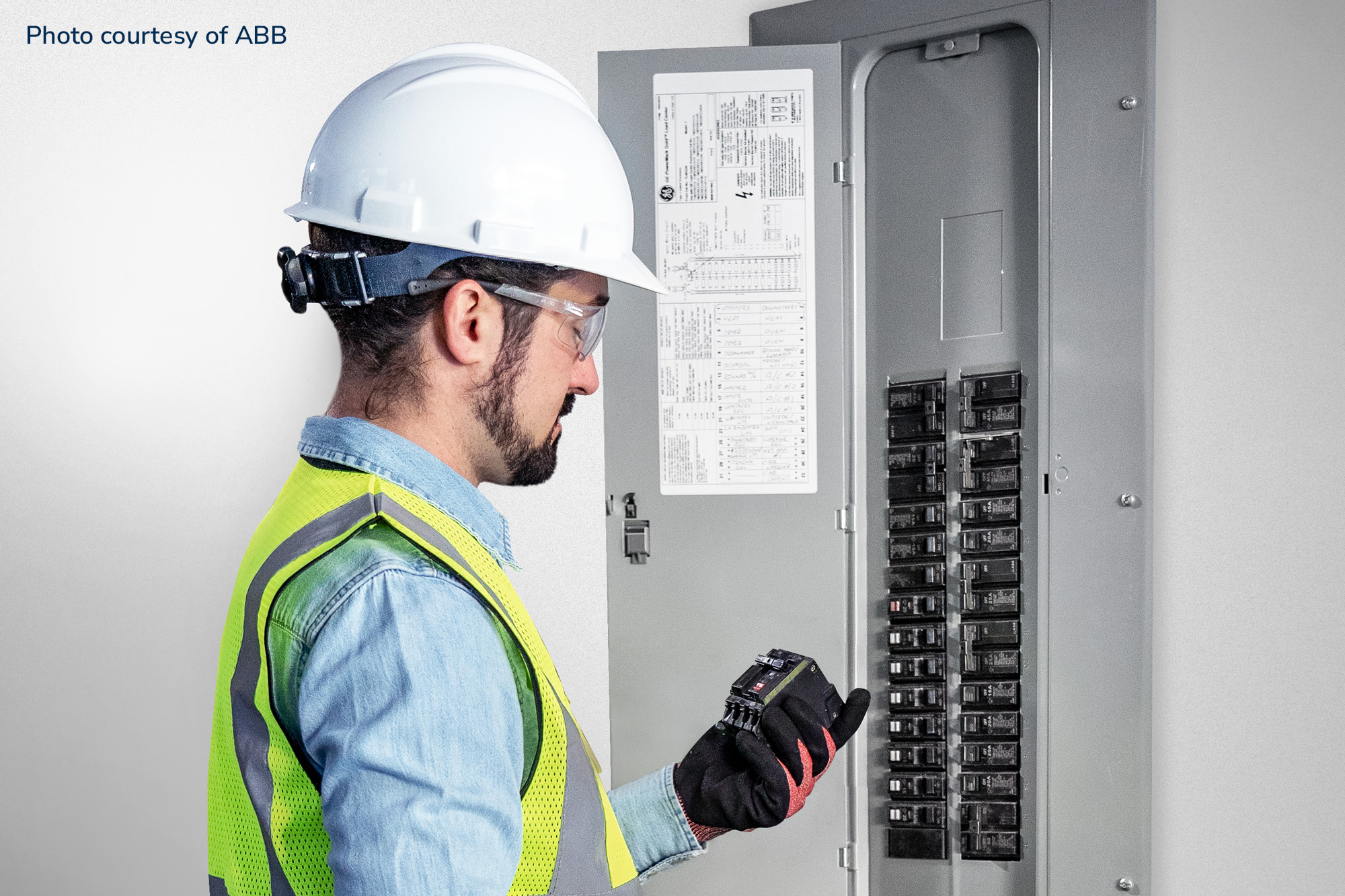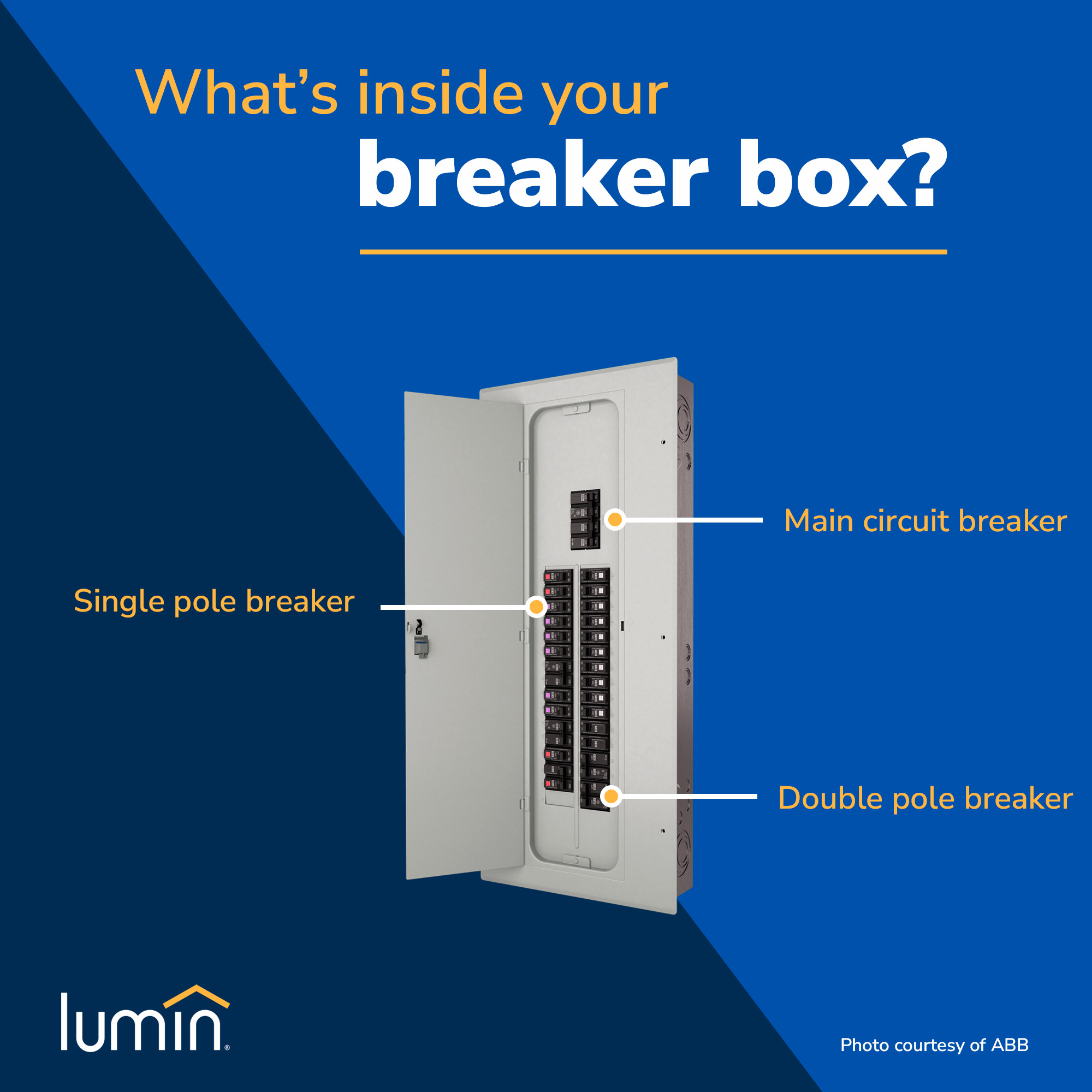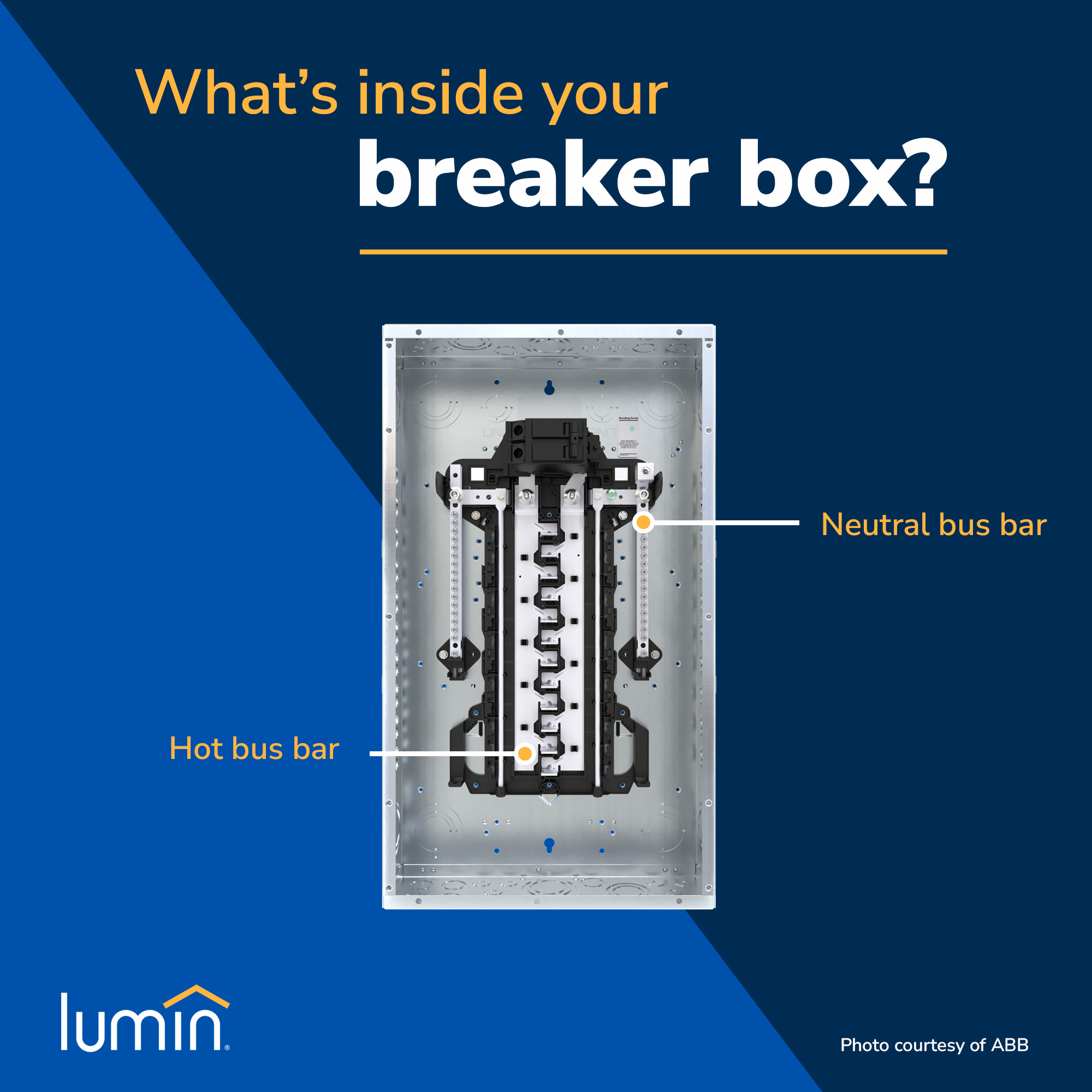We use cookies on our website.
Some of them are necessary for the functioning of the site, but you can decide about others.

Chances are if you own a home, you’ve had a run in with your breaker box a time or two. The breaker box or load center, is the central hub in your home for electricity. It receives the electricity from your utility company and routes it to the various circuits in your home. Knowing a little more about this panel can help you better manage your energy use in the future.
When you open the door to your breaker box, one of the first things you’ll notice are your circuit breakers. They may be familiar to you if you’ve had to switch one back on after a circuit tripped. They play a crucial role in managing and protecting the wires that connect to your lights, appliances and other electrical devices.
The main circuit breaker is usually larger than the rest and often positioned at the top or bottom of the box. It has an on and off switch that controls the flow of electricity to the other loads in your breaker box. All of your circuit breakers are surrounded by a cover that protects the remaining components inside the breaker box. It’s called the dead front cover because it’s not hot or energized, meaning it’s safe to touch. Because of this, moving beyond the protective cover is not recommended unless you are an experienced electrician. Some components inside the panel remain energized, even when you switch the main circuit breaker off.
There are a few different types of branch circuit breakers within the box. These circuit breakers are different from the main circuit breaker. Double pole breakers are a type of branch circuit breaker reserved for larger appliances, such as your central heating and air conditioning, pool pump, dryer or stove. They protect 240-volt circuits and are connected to both hot bus bars within your breaker box. More on this later. Single pole breakers connect to the outlets and lighting in your home. These breakers are used to protect 120-volt circuits and connect to just one hot bus bar.
The last thing you will most likely encounter are interrupter circuit breakers. There are ground-fault circuit-interrupter (GFCI) breakers that help prevent shock hazards, especially in wet areas of the home. They are designed to quickly shut off your electricity when a ground fault occurs. This is an event where the electrical current finds an unintended pathway to the ground. The other type of circuit breaker in this category are arc-fault circuit-interrupter (AFCI) breakers. These circuit breakers help prevent house fires. They detect and respond to dangerous arcs in the circuitry.
The image below illustrates a few of the different types of circuit breakers you may encounter. It features a modern load center by ABB that hosts both electronic and thermal magnetic circuit breakers. The electronic circuit breakers are marked with red, while the thermal magnetic circuit breakers are purple. Both options effectively protect your circuits from overloading or short-circuiting. Thermal magnetic circuit breakers measure both heat and current. They have been proven to work quickly when an unsafe event occurs and reset after it subsides.

Much like the circuit breakers, there are also different types of bus bars within your breaker box. The first type we’ll discuss is often called a hot bus bar. There are two inside your breaker box. The hot bus bars sit behind the circuit breakers. They pull the electric current from the utility, through your meter and to the branch circuit breakers that power the various appliances in your home.
Then, there’s the neutral bus bar. This bus bar splits the voltage coming off the utility transformer, which is 240 volts. It reduces the voltage in half for smaller loads that only require 120 volts, like a lightbulb. The neutral bus bar also acts as a return for 120-volt circuits, meaning used electricity travels through it to go back to the utility.
The last bus bar we’ll review is called the ground bus bar. This is where each circuit makes a connection to the ground. Literally, the earth. That’s because the ground is a safe place for excess electricity to flow without harming anyone. The ground wires don’t carry an electrical current. They are a safety measure to prevent damage to the breaker box, usually from an unexpected force of nature like a lightning strike. Ground wires are part of the electrical grounding process where an electrical device or conductor is connected to the ground to establish a safe pathway for excess electricity to escape to. The ground bus bar distributes electricity to ground when necessary.
All of these components work together to power your home and protect it. But there’s another technology that you can add into the mix to automatically manage the circuits in your breaker box for your benefit – smart panels.

Installing a smart panel or energy management system (EMS) is an affordable way to monitor and manage all the circuits in your home. In other words, it makes the circuits in your breaker box smart. With an EMS, you can prioritize what circuits are most important to you during a power outage. It uses this data to automatically optimize the stored energy from your backup device.
The Lumin Smart Panel is an energy management system that is universally compatible with all electrical panels and a straightforward installation for any electrician. It comes prewired to quickly connect to your breaker box. From there, you can choose what circuits to connect with the Lumin Smart Panel and start the process of organizing them from most important to least. This helps you efficiently use the energy from your solar + storage system, preserving the battery’s runtime for as long as possible and directing power to where it’s most needed.
While it’s highly recommended to consult an electrician when addressing your breaker box, it is also good to be informed about how your home’s electrical system works. That way, you can make smart decisions about managing your power.